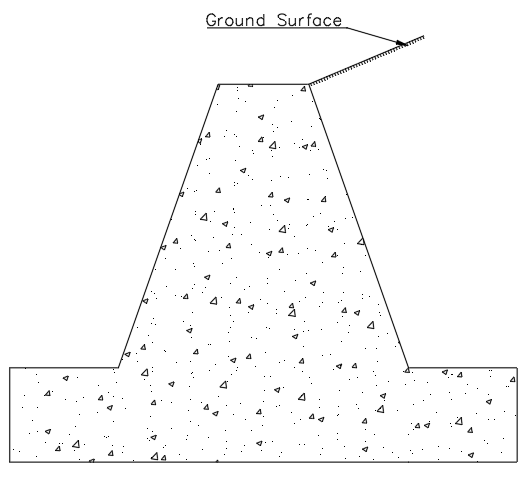Retaining walls serve as structures that help control the movement of soil on slopes. There are different types of retaining walls each tailored to meet different requirements and environmental conditions. Let’s explore some different types of retaining walls:
- Gravity Retaining Wall:
- It relies
on its own mass to withstand the force exerted by the soil it holds back.
- Usually
constructed using heavy materials such as concrete or stone.
- Appropriate, for constructing of low to medium height walls where good soil bearing capacity is available.
- Cantilever Retaining Wall:
- It
uses a thin stem and a wide base slab to distribute the weight over a
larger surface area.
- It
has a lever arm that improves stability.
- It needs less material in comparison, to gravity walls. Is suitable for medium to high walls.
- Counterfort Retaining Wall:
- This
type of wall is similar to the cantilever wall. It includes vertical
concrete webs evenly spaced along the backside.
- These webs, known as counterforts offer additional support. Enable the construction of taller walls.
- Anchored Retaining Wall:
- It
utilizes extra support by employing cables or stays that are anchored in
the rock or soil, behind it.
- This method is ideal for constructing retaining walls in situations where there is space for a proper leaning back design is limited.
- Sheet Pile Retaining Wall:
- It
typically consists of thin, interlocking steel or vinyl sheets driven
vertically into the ground to create a continuous wall.
- This type of wall is commonly deployed in situations where the excavation is limited and it's crucial to prevent water infiltration.
- Tied-Back Retaining Wall:
- Similar
to anchored walls but uses horizontal anchors (tiebacks) rather than
inclined ones.
- These tiebacks, typically made of reinforced concrete or steel are positioned in the soil, behind the wall.
- Gabion Retaining Wall:
- Made
by stacking wire baskets filled with rocks or concrete blocks.
- Allows
water to pass through, reducing hydrostatic pressure behind the wall.
- Suitable for low to medium height walls and often used in erosion control applications.
- Reinforced Soil Retaining Wall (Mechanically Stabilized Earth Wall):
- Uses
alternating layers of soil and tensile reinforcement elements (geogrids)
to stabilize the retained soil.
- This approach provides a cost-effective solution for medium to high retaining walls and bridge abutments.
- Hybrid Retaining Wall:
- Combines
two or more types of retaining walls to optimize the design for specific
site conditions.
- For instance, it might combine the principles of a gravity wall and a cantilever wall to benefit from both designs.
- Segmental Retaining Wall:
- Built
using interlocking concrete blocks or bricks.
- Provides
a more aesthetically pleasing finish compared to traditional retaining
walls.
- Suitable
for low to medium height walls and is often used in landscaping projects.
The selection of the type of retaining wall relies on factors, such as the height of the wall, properties of the soil, available space, budget constraints and considerations for aesthetics. Engineers assess these factors to determine the most suitable type of retaining wall for a specific project.






0 Comments